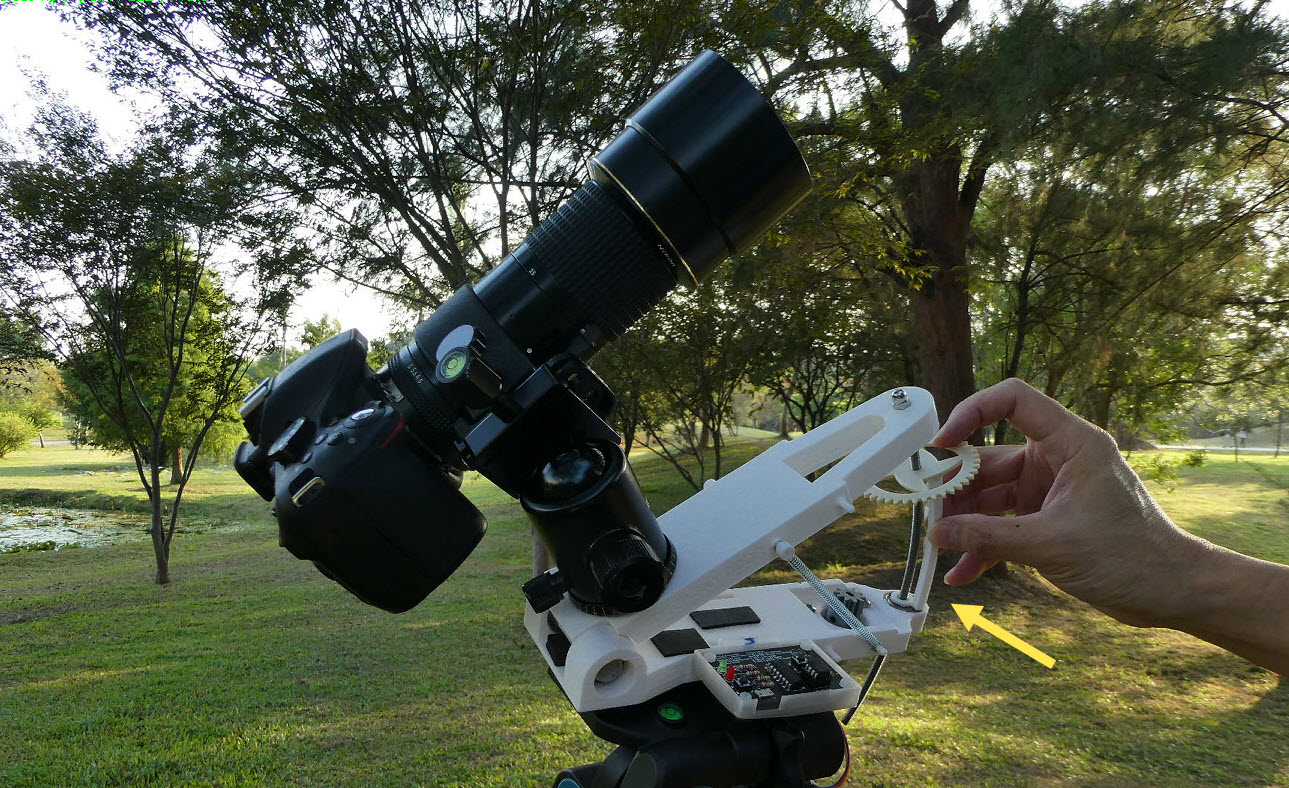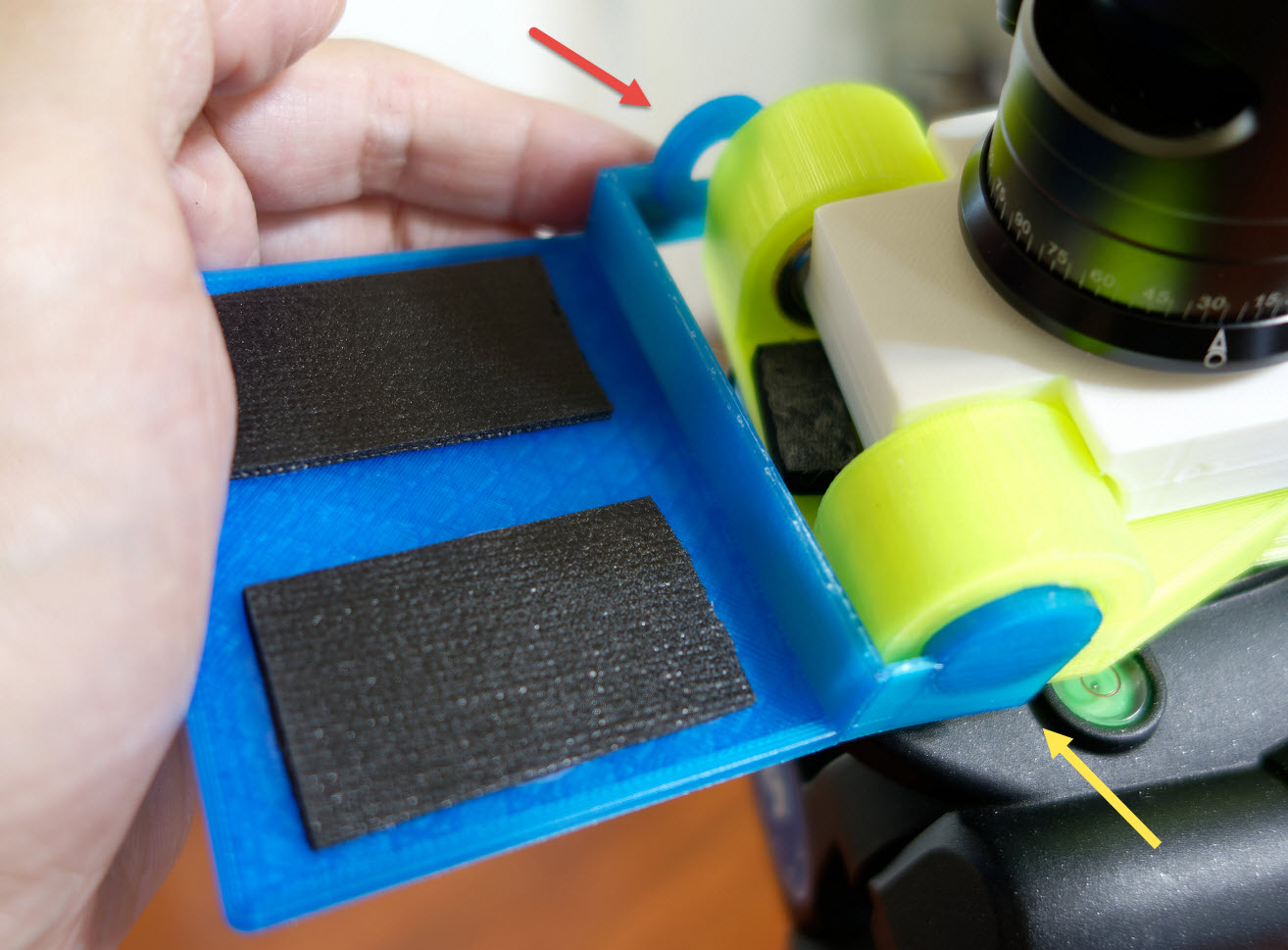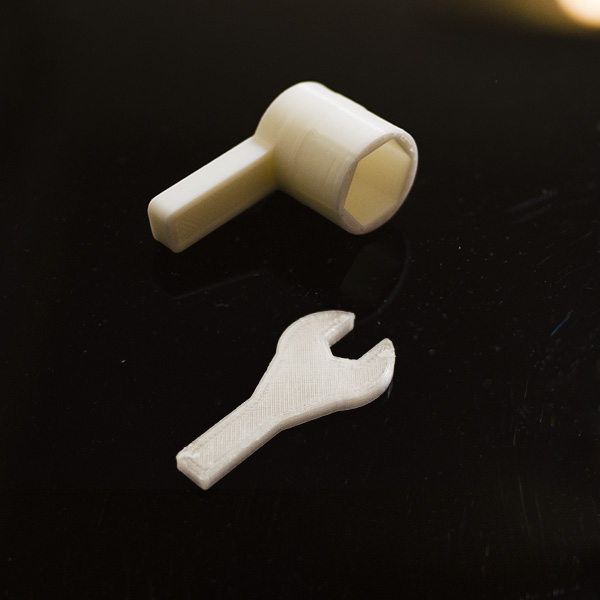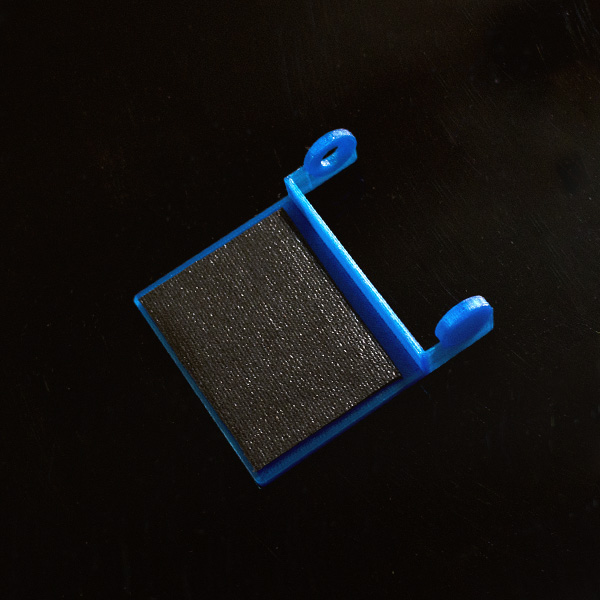

First, make sure to secure the screws on the star tracker without over-tightening to avoid damaging the 3D-printed parts. All screws should be snug (you can tighten the tripod head and 3/8" screw a bit more to prevent loosening). Check for smooth movement in all operations. Occasionally, the M8 bearing main joint and M5 threaded screws might become loose or wobbly, so it's essential to check and tighten them before shooting.
Lift the top board and use a spring to control the pulling force, ensuring that the camera won't tip over during operation. There are two springs with two adjustable tension points.

Use a Bahtinov mask for focusing, ensuring proper focus before starting the photography."
Press the start button on the control panel to initiate the operation. Press it again to stop. Each activation runs for approximately 100 minutes. You can pause it midway by pressing stop and then start again to extend for another 100 minutes."


Indicator lights:
The movement direction of the DSD equatorial mount/star tracker board can be adjusted to either raise or lower. This adjustment can be made based on your preference or depending on whether you are located in the northern or southern hemisphere.
The indicator lights on the controller represent the up and down movement. When the controller is initially powered on, the lights will flash three times. If the lights flash green three times, it indicates that the board will move upwards. If the lights flash red three times, it indicates that the board will move downwards.
After the three flashes, the indicator lights will remain solid. This part serves as a speed indicator. If the red light is on, it indicates that the current speed is start speed. If the green light is on, it indicates that the current speed is lunar speed. If both the red and green lights are on simultaneously, it indicates that the current speed is half-speed.
Next, press start button, and the star tracker will start operating. During operation, the red and green lights will flash simultaneously. Press the button again to stop it. Each time you press the start button, the star tracker will operate for approximately 100 minutes before automatically stopping.
Controller Operation
As long as the star tracker board is following the celestial objects' rotation, you can set it to move either upwards or downwards according to your preference. Just ensure that you maintain sufficient length of the rod.
To change the vertical movement direction, follow these steps:
Before shooting, make sure to align the polar axis properly. This allows the star tracker to rotate with the Earth, preventing star trails from appearing in your photos.
If you can see the North Star, using a star pointer to align with it is the fastest way. However, due to accuracy issues, we cannot determine the precise adjustment for the polar axis. Therefore, we rely on the drift method to correct the polar axis. We provide a star pointer holder and a switch ring, but please note that the star pointer holder is only suitable for star pointers with a diameter of approximately 14mm (please purchase separately). Also, remember to choose a green laser pointer to effectively point at stars. If the surface of the pointer is smooth, it may be slightly loose. You can use tape or any preferred method to increase the thickness. If the surface is matte, the star pointer holder may cause cosmetic wear on the pointer.



Use your mobile phone to determine the azimuth and elevation. Ensure that the phone has been calibrated properly. Adjust the star tracker to the northern position. Assuming your latitude is 23.6 degrees, set the elevation angle of the star tracker to 23.6 degrees. This completes the basic polar alignment.


If you cannot figure out how to perform drift alignment, just reduce the exposure time. As long as there are no obvious star trails, it will be okay to stack all your photos in software.
This might not be very accurate, but can be slightly adjusted as follows:
Set the elevation angle using the latitude of your location, then only adjust the azimuth. If you correct towards the right and the star trails become longer, that means you need to correct towards the left. During the adjustment process, pay attention the changes in the elevation angle, it must be correct to match your latitude.
Preparing the relevant accessories you'll need








If you have any questions about the Barn Door Tracker, feel free to email me (James).
email : deepskydoor@gmail.com